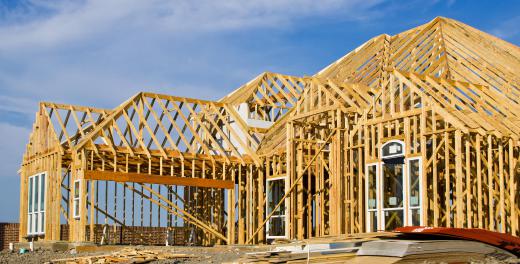A balloon frame is a frame that is used in construction to build buildings. This frame is made out of wooden studs that are placed at even distances in order to distribute the building’s weight. In order to add rigidity and strength, plywood and other plywood-like materials are nailed to the frame to create the walls. The roofs of these houses are composed of joists and rafters or of pre-made trusses. The roofs are then covered with other materials in order to help keep the weather out.
The term, “balloon frame” may have come from the frame’s early days. It is said that when buildings were first being built using this method, its critics thought it looked as frail and unstable as a balloon. The story proceeds that critics believed that the first hard storm will blow the building away. However, these buildings were sturdy. In fact, platform framing, a variant of balloon framing, developed as a method of construction and has been used in building construction throughout the world.

American history might have been a little different had the balloon frame not been invented. This method of construction allowed for homes to be shipped by train across the country to the west where wood was not abundant. Balloon framed buildings cost less time, money, and lumber to make than other methods of building. They also required no expertise to build. Thus, they were able to spread across the United States quickly, allowing the west to grow.
Before the balloon frame building, expert carpenters and joiners had to be used to build homes. In England, homes were commonly built with masonry and stone. The wood had to be expertly joined together in order for the home to be sturdy. This was a problem for early Americans who were not skilled laborers but rather were “jack-of-all-trades.” The balloon framed building did not have to be expertly joined together and used nails, a cheap commodity at that time, to attach the wooden beams together.
Many credit George Snow with creating the balloon frame building in the 1880s. However, some say that early versions of the method were in use for years before this. One of the first balloon framed buildings that Snow built was the St. Mary’s Church. The beauty of balloon frames was that homes could be pre-made and then shipped. Thus, houses were able to be ordered by catalog and shipped by train to the site.
